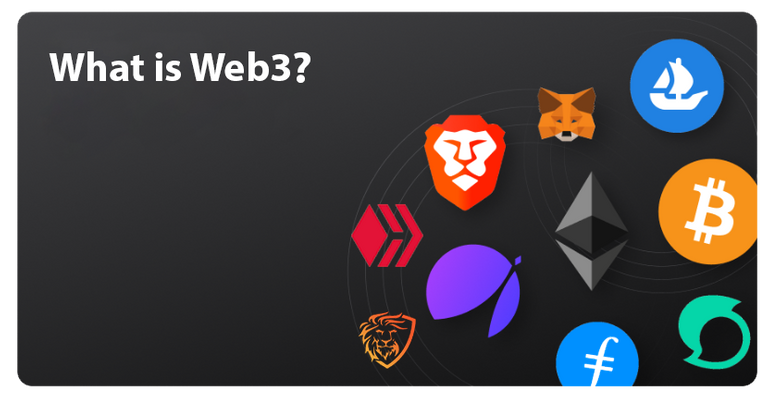Is Web3.0 the future?

You’ve heard top industry players and projects talk about how Web3.0 would revolutionize the internet. But what is it and what does it mean for crypto and blockchain?
What is Web3.0?
Web3.0 is an ideological revolution to wrestle back control and power from centralized giant corporations. It envisions an online decentralized ecosystem that is non-custodial and which transcends physical boundaries. Through incorporating new technologies like blockchain, users have control over their personal data and sovereignty over their identity.
A brief history before Web3.0
Ethereum co-founder and Polkadot founder Gavin Wood first coined the term in 2014, as the next iteration of the internet. But before Web3.0, there were Web1.0 and Web2.0.
Web1.0 was the beginning of the internet which consisted of static web pages and links. Web2.0 came next, and introduced interactive content, feedback systems and social media.

However, to participate in Web2.0, you have to give away your personal data to companies (e.g. Google, Facebook) when registering for accounts or buying products and services. After all these years, these companies now hold the majority of data on the internet - and thus control the internet.

Crypto and blockchain on Web3.0
Blockchain technology is the main driving force behind the Web3.0 ideal.
- Removes need for central custody: Every transaction or movement can be tracked on an online ledger.
- Empowers individuals to create the decentralized web: Users can develop their own DApps, instead of only consuming and creating content on platforms by tech giants.
- Allows for tokenization: Anything - whether currencies, art, music, entry tickets, videos, physical items - can be tokenized, then bought, sold or collected.
- Empowers user participation: Users, not centralized corporations, decide what the internet should be.
- Transcends physical boundaries: Users can interact from across the world in virtual metaverse using a single online identity.
If blockchain technology is the backbone of Web3.0, digital assets like crypto and NFTs keep Web3.0 alive. The world’s oldest crypto, Bitcoin, was created for decentralized payments. Payments via crypto would be fast, borderless and have low fees. Already, TradFi payment giants like PayPal and Stripe are incorporating crypto payments in their services.
Ethereum Name Service (ENS) domains are NFTs that prove ownership of a user’s username and can store an avatar and other profile data, to be used across decentralized services.
Web3.0 Challenges
While Web3.0 seeks to give power back to the people, some argue that early adopters and VCs would still hold ownership over blockchains or metaverses. Web2.0 companies may also have enough funds and resources to influence Web3.0. Perhaps this is why decentralized autonomous organizations (DAO) have gained prominence in recent years.
Blockchain is also still a nascent technology and both crypto and traditional industries are still trying to understand and develop the sector. However, there is no denying the potential of Web3.0 to change everyday life, perhaps in the next decade.
$$$$$$$$$$$$$$$$$$$$$$$$$$$$$$$$$$$$$$$$$$$$$$$$$$$$$$$$$$$$$$$$$$$$$$$$$$$$$$$$$$$$$$$$$$$$$$$$$$$$$$$$$$$$$$$$$$$$$$$$$$$$$$$$$$$$$$$$$$$$$$$$$$$$$$$$$$$$$$$$$$$$$$$$$$$$$$$$$$$$$$$$$$$$$$$$$$$$$$$$$$$$$$$
Risk Reminder: Crypto trading carries a risk. All trading activities are done at your discretion and at your own risk. The information here should not be regarded as financial or investment advice from me.
Posted Using LeoFinance Beta
Congratulations @urbanexplorer! You have completed the following achievement on the Hive blockchain and have been rewarded with new badge(s):
Your next target is to reach 200 upvotes.
You can view your badges on your board and compare yourself to others in the Ranking
If you no longer want to receive notifications, reply to this comment with the word
STOPCheck out the last post from @hivebuzz:
Support the HiveBuzz project. Vote for our proposal!